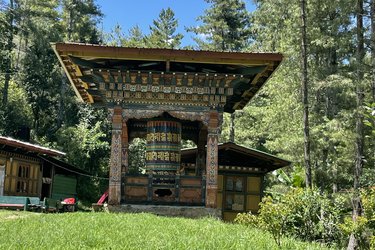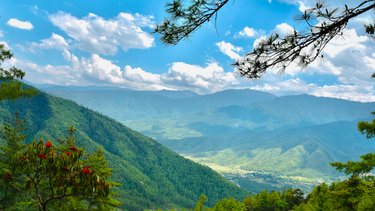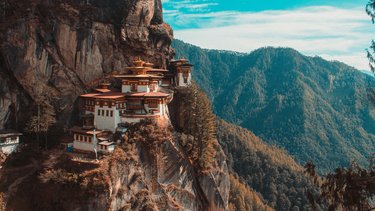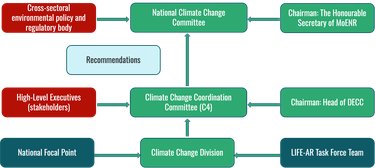

Bhutan is a landlocked nation in the Eastern Himalayas, which spans an area of 38,394 km². The country’s diverse topography, steep mountains, and deep valleys, significantly influence its climate, biodiversity, and hydrological resources. Bhutan’s unique geographical features contribute to its rich natural heritage, including a network of rivers, high-altitude wetlands, and extensive forest cover. The total forest area is estimated to be 69.71 % (2.68 million ha) of the total land area and 52.0% of the country is protected through National Parks, Wildlife Sanctuaries, Strict Nature Reserve, Biological Corridors, and Royal Botanical Park.
Bhutan's economy heavily relies on climate-sensitive sectors such as agriculture and hydropower. Agriculture employs over 44 % of the rural population and is vital for food security, while hydropower contributes 13.4% of the country’s GDP. However, the country faces significant vulnerabilities due to climate change impacts, including extreme weather events that threaten agricultural productivity and infrastructure.
Bhutan’s climate features three distinct climatic zones: subtropical, temperate, and alpine. Southern Bhutan has a hot and humid subtropical climate; the central parts of the country consist of a temperate climate with warm summers and cool, dry winters while the higher parts have very short, cool summers and winters with substantial snowfall. This diversity is further enhanced by various micro-climates resulting from significant changes in elevation and topography. Two primary factors influencing the variation in mean temperature and precipitation are the country’s vast altitude differences and the impact of the North Indian monsoons. Bhutan’s position at the northern edge of the tropical circulation is crucial in shaping its climate.

Bhutan is one of the Front Runner Countries (FRC) of the LIFE-AR initiative and signed the Memorandum of Understanding of the initiative on March 17, 2021 recognizing that the LIFE-AR is an LDC-led and driven initiative with the objective of developing effective longer-term climate adaptation interventions and investments for building resilience to the changing climate. Bhutan stepped up to take the LDC vision forward and translate to country-level in order to implement community-led adaptation actions to build resilience to climate change that aligns with the Nationally Determined Contributions and the National Adaptation Plan.
As of early 2025, Bhutan is transitioning from the Establishment Phase to the Test and Evolve phase. The transition was conditionally approved by the 10th Board Meeting held in Thimphu, Bhutan on July 11, 2024. Bhutan has identified the Local Government (LG) planning system as the Delivery Mechanism for LIFE-AR through the conduct of Situational Analysis for Bhutan. It will be strengthened by integrating adaptation and resilience to deliver climate finance to the local level behind community priorities and build and improve on the existing national and LG planning system to mainstream climate change in the planning process.
Bhutan has a functional “whole of society” National Platform to provide technical and governing oversight for LIFE-AR. National LIFE-AR Taskforce comprises of representatives from the Department of Macro-Fiscal and Development Finance (DMDF), Department of Planning, Budget, and Performance (DPBP), and Department of Treasury and Accounts (DTA) under the Ministry of Finance (MoF), Department of Local Governance and Disaster Management (DLGDM) under the Ministry of Home Affairs, Ministry of Energy and Natural Resources (MoENR), Ministry of Agriculture and Livestock, Ministry of Infrastructure and Transport, National Commission for Women and Children, Non-Governmental Organization (NGO), and Civil Society Organizations (CSO).

The Climate Change Coordination Committee (C4) is the High-Level Executive Representation from relevant stakeholders that provides technical support for LIFE-AR and the National Climate Change Committee (NCCC) is a cross-sectoral environmental policy and regulatory body for LIFE-AR.
As of March 2025, Bhutan is finalising the Establishment Phase of the initiative by fulfilling the conditions of the Board approval. The key milestones in implementing the LIFE-AR in Bhutan are the conduct of the Capacity Needs Assessments, the development and deployment of the training curriculum in pilot districts, and the formulation of the Delivery Mechanism Design Note and the Communication Strategy. Further, Bhutan will initiate to involve communities, communities selection, and investment selection processes.